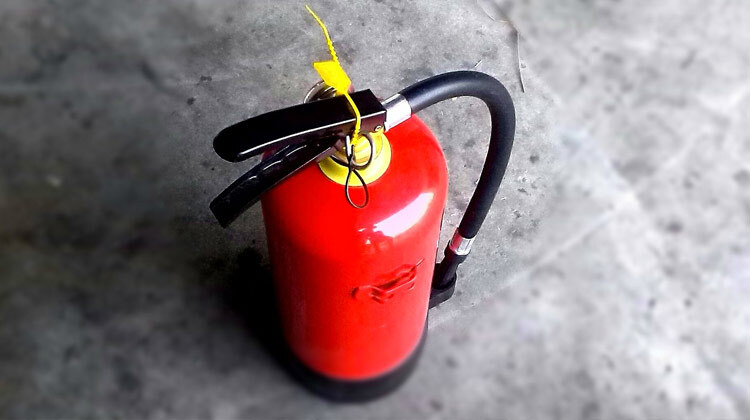All employers have a legal responsibility to ensure fire safety is maintained in the workplace or commercial premises, whether they take lead themselves or delegate to another appropriate member of staff such as a risk assessor. The appointed person has the responsibility of: regularly completing fire risk assessments, maintaining fire safety measures, planning for an emergency evacuation, and ensuring everyone within the workplace is aware of this information.
Fire Safety Hazards
In a workplace setting there are a whole host of fixtures and fittings that can become dangerous and contribute to a fire such as electrical equipment, lighting, paper, furniture and much more. The responsible person should identify all items that could become dangerous so that they can put in place the appropriate measures to prevent fires from occurring, as well as to help minimise injury or loss of life in the unfortunate event of a fire. This information can then contribute towards completing a fire risk assessment which is explained in more detail below.
Fire Risk Assessments
Fire risk assessments should be completed regularly and kept up to date to ensure all present risks are contained. The risk assessment can be done as part of your health and safety risk assessment or separately, however any premises that has 5 or more employees has to have written documentation of the assessment being carried out.
There are 5 necessary steps to consider to ensure an adequate fire risk assessment:
- Identifying fire hazards
- Identifying who is at risk
- Evaluating the risk with intention to reduce or remove it
- Recording your findings to provide evidence of how risks are being managed
- Formulating an emergency evacuation plan accompanied by regular fire drills to supply training for all employees.
If you're still unsure what is required to carry out a successful risk assessment, there are assessment guides on government websites to assist you. There is also the option of hiring a professional risk assessor if appropriate.
Fire Evacuation Plan
There are many points to consider when developing a fire evacuation plan and so they can vary depending on your type of premises and who occupies it. There should always be a clearly marked, well-lit escape route that is short and direct, for an efficient evacuation. You can purchase generic signs, usually on green backgrounds, that can be placed throughout the route with direct symbols to indicate where to go. It may also be useful to display a map of the premises to indicate the emergency escape routes, so anyone can familiarise themselves whilst at the workplace.
Depending on the scale of employees and visitors in the premises, there should be a satisfactory number of escape routes and exits so that everyone can leave the premises quickly and safely, without causing heavy congestion. Once people are outside following an evacuation, there should be a noticeable meeting place that is a safe distance away from the site, to conduct registers in case any person is left in the building. Special arrangements should be put in place for anyone with mobility needs, so for example, particular people can be allocated to assist those in wheelchairs etc.
Floor Safety
Slip, trips and falls account for around 40% of accidents in the workplace and, due to panic, can be one of the highest potential risk factors in the event of a fire evacuation. Therefore, at all times, pathways and emergency exits should be free from obstructions that may cause further injury, or delay, during an evacuation.
Similarly, if someone were to slip on a surface that was not up to British slip testing standards during the evacuation process, it could lead to further injuries and a delay in others escaping the fire, which in the most concerning circumstances could result in death.
Having unsafe flooring materials that don’t carry the correct slip resistance can not only mean the potential for your staff members to become injured whilst attempting to leave the premises in the event of a fire, it can also leave your business liable in any legal battle from such injuries. Whilst carrying out the fire risk assessment it’s highly beneficial to conduct pendulum slip tests simultaneously to ensure all flooring meets HSE anti-slip regulations.
Fire Safety Equipment and Drills
Although types can vary according to your workplace, you must have a fire warning and detection system to alert employees of a fire on the premises. Checks should be carried out on alarms to validate they are working correctly at least once a year. Similarly, you should ensure all emergency systems are in working order including lighting, fire doors and fire escapes. Any faults should be recorded for future reference. All employees, new or existing, need training so they are fully aware of any present fire risks. When completing alarm checks, fire drills should be carried out so employees can simulate what would happen in a real time fire emergency. This ensures staff are familiar with evacuation routes and in the event of a real fire, as an employer you can feel confident in a successful evacuation.
If you are in the process of risk assessing your premises for fire or health & safety purposes and need to find out whether your flooring is fit for purpose contact the team at National Testing today. We are the leading specialists throughout the UK in a variety of slip tests - catering for stairs, ramps and level flooring to ensure your emergency exits are up to the standards required by the HSE and to help prevent accidents or injury to your employees.

